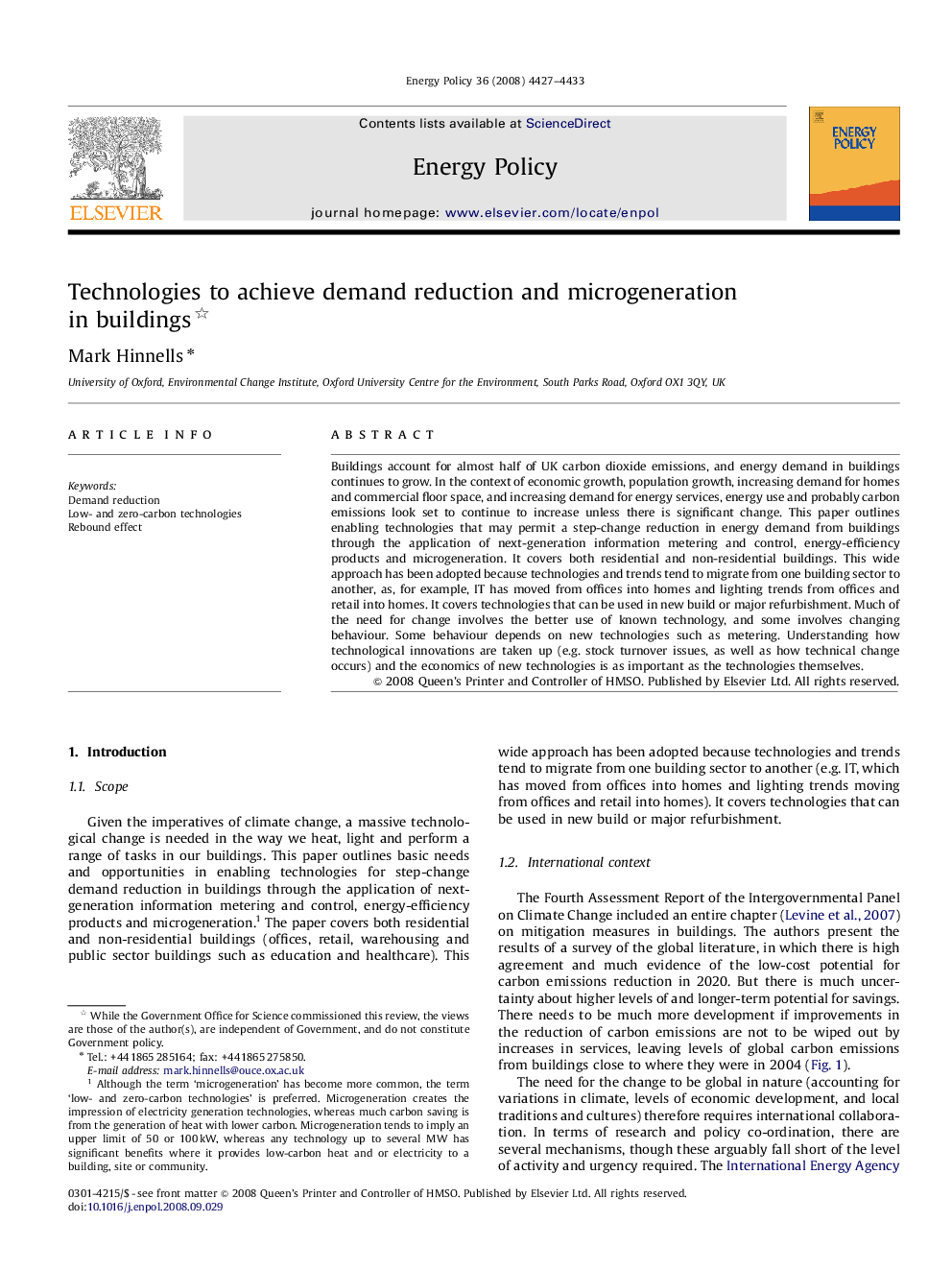| Article ID | Journal | Published Year | Pages | File Type |
|---|---|---|---|---|
| 993881 | Energy Policy | 2008 | 7 Pages |
Buildings account for almost half of UK carbon dioxide emissions, and energy demand in buildings continues to grow. In the context of economic growth, population growth, increasing demand for homes and commercial floor space, and increasing demand for energy services, energy use and probably carbon emissions look set to continue to increase unless there is significant change. This paper outlines enabling technologies that may permit a step-change reduction in energy demand from buildings through the application of next-generation information metering and control, energy-efficiency products and microgeneration. It covers both residential and non-residential buildings. This wide approach has been adopted because technologies and trends tend to migrate from one building sector to another, as, for example, IT has moved from offices into homes and lighting trends from offices and retail into homes. It covers technologies that can be used in new build or major refurbishment. Much of the need for change involves the better use of known technology, and some involves changing behaviour. Some behaviour depends on new technologies such as metering. Understanding how technological innovations are taken up (e.g. stock turnover issues, as well as how technical change occurs) and the economics of new technologies is as important as the technologies themselves.
